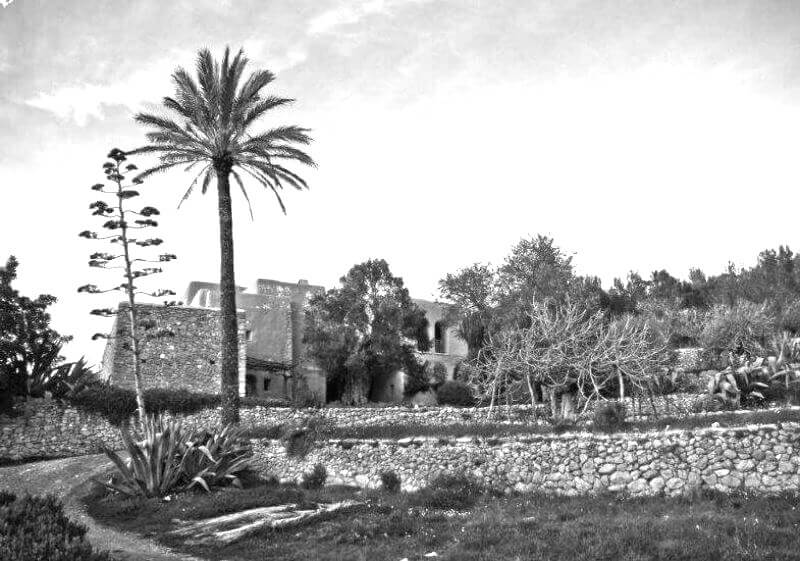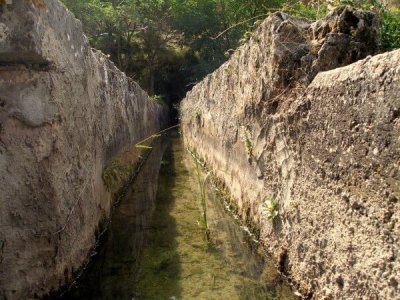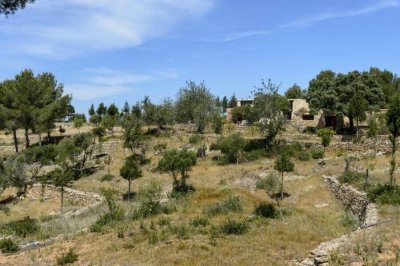The garden and wild flora that we know today on the island has been largely the result of the different cultures that settled in the Pitiusas throughout history. The ships brought seeds and plants from distant lands that were used for the cultivation. Not all seeds germinated equally in the island’s clayey, calcareous soil, nor did those plants thrive to survive the arid climate without the help of an effective irrigation system. After several centuries, some of these plants managed to acclimatize better than others and have been included in the catalog of indigenous plants and are today considered endemic to Ibiza and Formentera.
Among the multitude of conquerors who came to Ibiza, three cultures in particular stood out because they had the greatest influence on the introduction of new species and agricultural systems:
1. The Phoenicians (1200 BC – 200 BC) were the great merchants of their time. They founded one of their most important colonies in Ibiza, which meant the true beginning of a solid settlement and cultivation on the island. Having under their control a vast trading network and interaction with other civilizations across the Mediterranean, the phoenicians introduced a large number of new crops and techniques to the island.
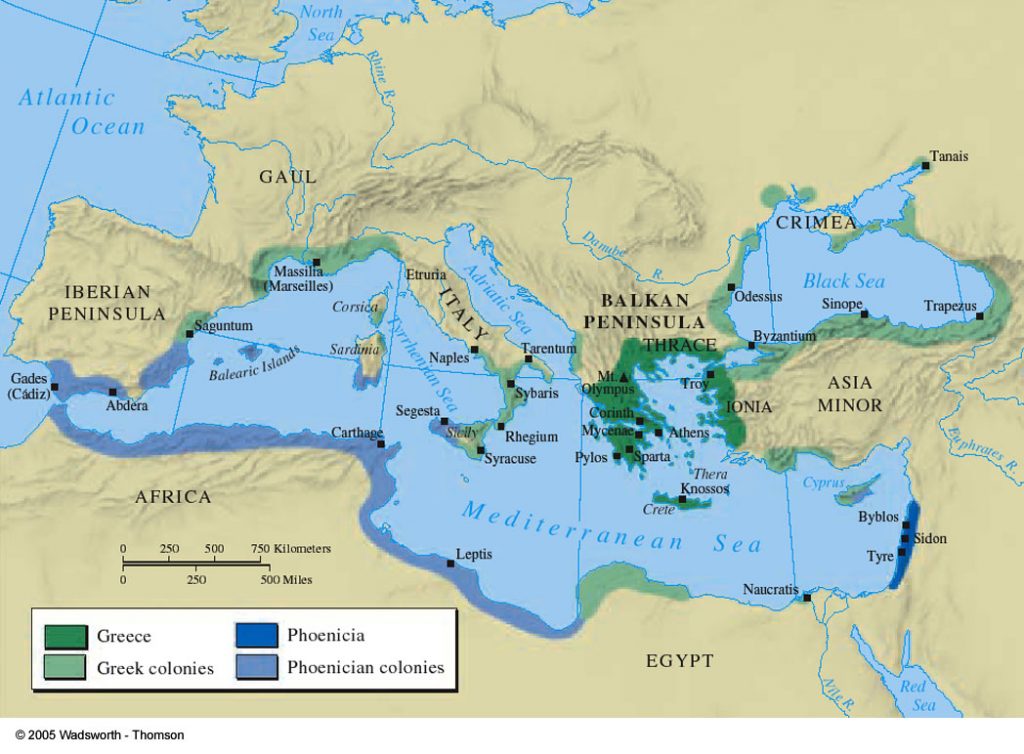
2. The Muslim conquest of Al-Andalus and the subsequent Caliphate of Córdoba (AD 900 – 1235) meant a new era of prosperity and abundance for Ibiza, which left two centuries of dark periods of changing dominance of the vandals behind. With the arrival of the Arabs, new plant and fruit tree species were introduced, but above all were the modern cultivation knowledge such as the cultivation of the terraces and the most advanced irrigation systems of their time.
3. New plants and a series of cacti came from the Spanish colonies of Latin America, which adapted perfectly to the island conditions and now make up a significant part of the native flora. These new species from the new continent have been used by the local population for a number of purposes.
Here you will find a short guide to the most characteristic trees, palm trees and cacti of the Ibizan Garden with a brief description of their origin and use:
Carob tree (Ceratonia siliqua) – Its cultivation was extensive in the Arab era, but it is unknown if it is an indigenous tree. The fruits ripen in autumn acquiring a brown color. Carob was normally used as feed for livestock and was used to combat colds. Today considered a superfood and also used in the manufacture of medicines and cosmetics.
The carob trees provided shade in good times and nourishment in bad times. It was especially in the post-war period, when the general famine led to the harvest of a fruit that had hardly been considered before. Animal feed saved the lives of their owners, and later generations paid the debt with affection.
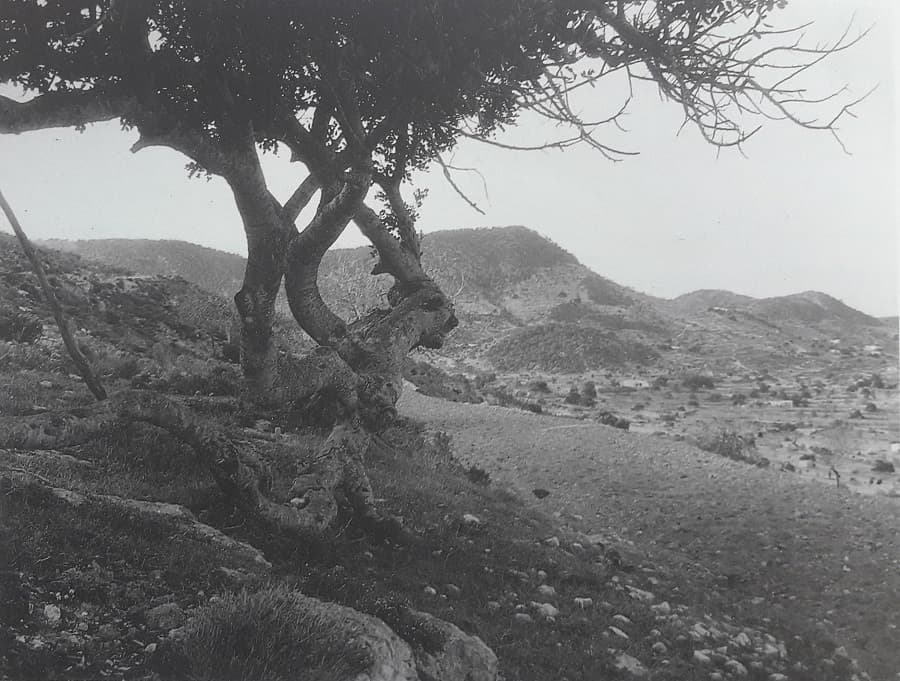
Almond (Prunus dulcis) – growing wild 6,000 years ago, it began to be cultivated in Central Asia and was probably introduced to Ibiza by the Phoenicians. The almond tree had to be one of the first crops because it was very common in ancient times.
The tree adapted well to the light, calcareous, dry and stony soil of Ibiza as well as the temperate climate, with mild winters and little wind inside the island. It adapts so well in some areas of Ibiza that it blooms in early January. A beautiful natural phenomenon called the “snow” of Ibiza.
Giant Reed (Arundo donax) – was an everyday element of rural life in Ibiza, and came to the island from northern India and Nepal in the 16th century. The farmers used it for various purposes: for tomato plants to climb, to create enclosures for the animals and to create baskets. The cut reeds were later burned. The reed fields were regularly cut and kept under control, but when most of the field work was abandoned, this has led to unprecedented expansion of the reed, and this has recently become a problem for the island’s biodiversity.
The slender reed swaying in the wind in the dry waterbeds seems to beautify the landscape and to be a characteristic element of these habitats. It is incredibly hardy and sometimes even populates dry terrain or salt water lagoons (Ses Feixes).
Prickly Pear or Nopal (Opuntia ficus-indica) – is a cactus of Mexican origin, which was introduced by the Spanish conquistadors in Europe and is very common today. In the finca, it was used as a natural separation element, as a windbreak, as a primitive toilet or as a discrete waste disposal site.
The nopal has an anarchic growth form, which forms a complicated tangle of logs, on which flat blades covered with spikes grow one above the other in completely random order, from which grows a spherical fruit covered with thin, almost invisible needles. This fruit, called prickly pear, has been an important part of the local diet since its arrival on the island and the scoops have been used to heal injuries. Medicinal properties are attributed to the prickly pear. Today it is one of the most popular diabetes remedies. Their tender fruits are prepared liquefied with water or eaten raw or in a salad. The boiled root is also said to be a good remedy for gastritis and intestinal colic.
Holm oak or acorn (Quercus ilex) – formerly populated the forests of the Balearic Islands; but deforestation from the 17th to 20th centuries in Ibiza has led the holm oaks to be a rather rare tree. They are usually seen near rural farms for the use of their wood, which is highly valued for its hardness. This wood was used to make utensils and carriage, in addition to making charcoal. The acorns, are edible for both human and animal use and the bark was used for medicinal purposes, as healing and anti-inflammatory.
A close, bush-like relative, the Kermes oak (Quercus coccifera), is found in the interior of the island, feral near torrents and the forests surroundings.
The biggest holm oak on the island is the Bellotera de Can Carreró, located near Benirrás, seven meters high and a crown 20 meters wide.
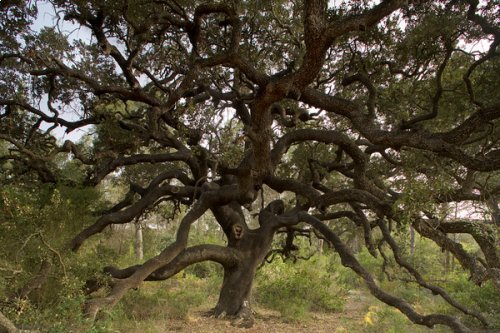
Pomegranate (Punica granatum) – fruit tree of Asian origin, probably introduced by the Phoenicians or Carthaginians. In the past, a dark red pigment was extracted in the Balearic Islands to dye clothes, and the bark of the roots was used to fight intestinal parasites. The fruit is considered a superfood and powerful antioxidant, containing a large number of vitamins and minerals.
The pomegranate is a tree perfectly adapted to the climate of Ibiza and can be seen throughout the territory in the wild.
Fig tree (Ficus carica) – originally from Asia Minor and introduced by the Phoenicians. As an exceptional survivor, it grows easily even in poor or very calcareous dry areas, thanks to strong roots that slowly but steadily grow in depth to maintain groundwater. Indeed, it is recommended to plant the fig tree in an isolated place in the garden, away from the house and pool or any other structures, as it could easily lift the concrete over time.
The fig tree can grow both inside the island and on the coast. Because of its tendency to grow at low altitudes, it can withstand occasional strong winter winds. It should be noted that, apart from the nutritious fruits that we all know, fig trees offer a dense, fragrant shade under the tree top in the summer heat.
The listed fig tree known as na Blanca d’en Mestre, located in the extension of the camí vell de la Mola, in Formentera, is more than one hundred years old and has an enormous crown, supported by juniper struts, which reaches a horizontal surface of between 300 and 350 square meter.
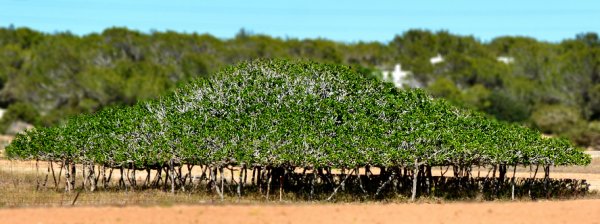
Loquat (Eriobotrya japonica) – Plant native to China and Japan, probably introduced by the Arabs. Its adaptation is good to the Ibizan environment, but it appreciates the irrigation in the driest months.
It has been better known as an ornamental tree, but it produces a sweet and succulent oval fruit, with a flavor halfway between peach, citrus and mango. It is an excellent diuretic and helps to eliminate excess fluids in the body.
Lemon tree (Citrus × limon) – it is estimated that it originated in China and came to the Mediterranean via Greece. Like the loquat, it was originally used as an ornamental tree. It is one of the fruit trees that has best adapted to the island’s climate and requires minimal maintenance. Excellent source of vitamins and a strong alkalizing agent.
Olive (Olea europaea) – originally from the s. I a. C., reintroduced by the Phoenicians. The olive has sustained the Mediterranean for millennia, providing fruit, oil and wood and a sense of historical importance in its gnarled and ancient branches.
The most magnificent of the trees is an ancient olive tree known as n’Espanya, located in San Carlos. It is believed to be over 800 years old and with a perimeter of 10.5 meters, it is one of the oldest olive trees in the country.
Palm tree (Phoenix dactylifera) – original from North Africa and introduced by Punic peoples (Phoenicians and Carthaginians), where it was planted near water points to take advantage of its edible fruits, the dates – which are a great source of minerals, so It helps to recover muscles, ensures the proper functioning of the nervous system and strengthens bones and teeth.
Apart from its fruit it was appreciated for its elegance and beauty, reaching a considerable height. The palm tree was also a symbol of social status and was used to be planted individually or in groups near the house.
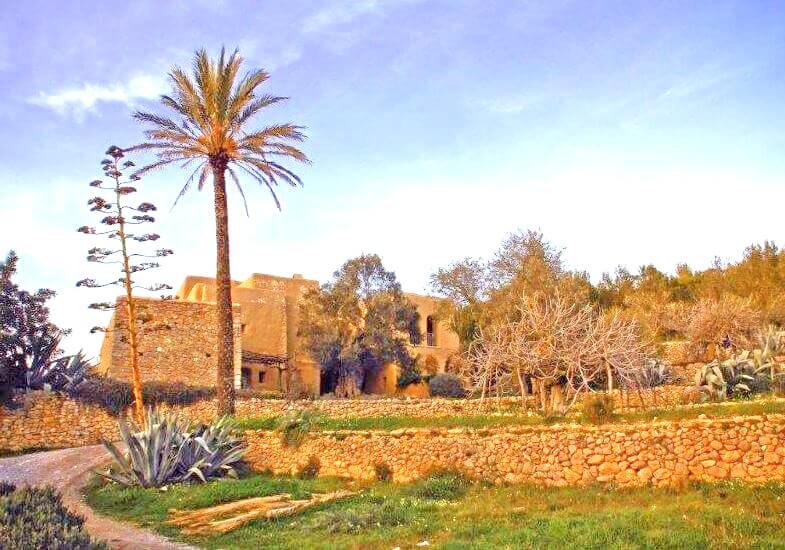
Sentry plant (Agave americana) – originally from Mexico and – like the prickly pears – introduced in the early 16th century. It is very drought-resistant, with the leaves forming a rosette at the bottom of the stem to guide the water to its base. The vegetable fiber is extracted from its large bluish green leaves to produce Ibiza’s historic footwear, the Espardenyes.
The cactus, locally called Pitrera, can live up to 100 years and only bloom once (monocarp). The flowering consists of a 5-10 meter high and branched stem with yellow flowers. When the flowers die, the plant dies. Fortunately, before dying, they tend to produce numerous shoots that spread easily.
Aleppo pine (Pinus halepensis) – native to Syria, today the most common tree on the island. The wood was mainly used for furniture and firewood, the bark was exported to dye leather, and the waterproof resin that was produced when the juice was cooked was used for shipbuilding and other household chores. This pine is considered to be very resistant and aggressive, colonizes the environment and acidifies the soil to such an extent that only a few species of shrubs and plants can survive in its shade. For this reason, the trees removed the jaws when they appeared in the fields of the cultivation.
Stone pine (Pinus pinea) – unlike the Aleppo pine, this grows very differently and requires more water. It is also a tree that is completely indigenous, Spain being the country with the most specimens in the world. Its prized fruits, pine nuts, are of great nutritional value and contain 2/3 of the proteins in veal meat.
The Pi ver d’en Besuró is the largest specimen on the island, featuring a 12-meter tall height with a 25 meter wide crown and around 100 years old.
Sabina (Juniperus phoenicea) – was introduced by the Phoenicians in ancient times. It offers extremely strong wood that helped build the island’s houses, villages and settlements, while the sap served as an insect repellent resin. The trees themselves were carefully cared for, gently cultivated and made to grow straight and strong.
It is possibly the most emblematic tree in Ibiza and is currently classified as the island’s cultural heritage. A group of ancient Sabinas are located near Sa Rota in Santa Eulalia, a unique tree complex that is listed and protected as a historical heritage.
Grapevines – also introduced by the Phoenicians, but saw the era of maximum popularity in the 19th century. Later the plague of phylloxera arrived in Ibiza and the cultivation decreased. However, the residents have never stopped growing wine. Today the cultivation has expanded massively and the wine that is produced in Ibiza has even attracted attention outside the island. The island offers small valleys surrounded by mountains that are very suitable for viticulture. The soil, which consists of limestone, Dolomites and marl, is mostly clayey.
The “Sant Mateu Wine Festival” is celebrated in December in the village of Sant Mateu, and at this festival, in which people from all over the island participate, the locals present the young wines.
In addition to this selection, other plants such as orange trees, apricots, plums and vines complete traditional agriculture. The wheat and other cereals were mown in May. The red clay soil is fertile as long as it has enough moisture. During the summer, when it is not raining, most of the fields remain unused. Few farmers grew vegetables. The islander’s demand was met by transports from the mainland, and the exports were predominantly the carob fruit and salt.
There are characteristic elements of infrastructure and irrigation that have been of great importance in promoting a more productive crop on the island. These techniques were largely introduced by the Arabs – since they came from the driest desert areas on the planet and had developed (the still) most effective methods of water extraction. These elements are the following:
Terraces – were introduced during the period of Muslim rule and are very common in the length and breadth of the mountainous landscape of the island. These are terraced stone walls along the sloping terrain to create horizontal areas that are suitable for cultivation. They were created in steep terrain of more than 30%, where horizontal excavations were not possible.
Cisterns – usually underground cisterns that are filled by collecting rainwater. They are used in places away from rivers where there are no springs and wells, or where the groundwater is hard and salty and cannot be used to supply people or animals.
Acequias – is an open trench or canal that was built for irrigation or water supply. With the particular development in Arabic culture, these constructions have affinities for use with the Roman aqueducts, although their main use is to irrigate orchards, plantations or fields, using the orography of the site for the distribution and management of water from the networks of the Main channel.
Wells – were developed to optimally use the groundwater before many groundwater veins were exhausted due to overuse and the desalination of sea water had to be used. Meetings and festivals took place around fountains and springs, symbols of life and regeneration in many peoples of the world.
All of these cultivations and constructions are reminiscent of the past of an agricultural island with poor soils, scarce water and a diverse population history. Centuries of invasions and looting followed by hunger and neglect led to a culture of resilience and ingenuity in Ibiza.
Globalization has facilitated access to materials and ideas on an unprecedented scale, but Ibiza’s cultural heritage is still very much alive as a model of self-sufficiency and connection with nature, which for many can be a fundamental part of personal well-being.
References:
Ferrer Abarzuza, A. (1974). La casa campesina de Ibiza. Madrid: Narria. [consulted 10 de abril 2020]
Gurrea Barricate, R. y Martín Parrilla, Àngeles. Eivissa-Història-Època andalusina. EEIF (Enciclopèdia d’Eivissa i Formentera) [consulted 5.6.2020]
Espinosa Noguera, J. Guia Botànica Sa Punta d’es Molí. Ajuntament de Sant Antoni de Portmany. [consulted 10.5.2020]
Blakstad Design Consultants. Heritage: The singular trees of Ibiza. [consulted 1.5. 2020]
Convalia, C. Sanean y apuntalan la mayor higuera de centenaria de Formentera. Diario de Ibiza. [consulted 1.5.2020]
